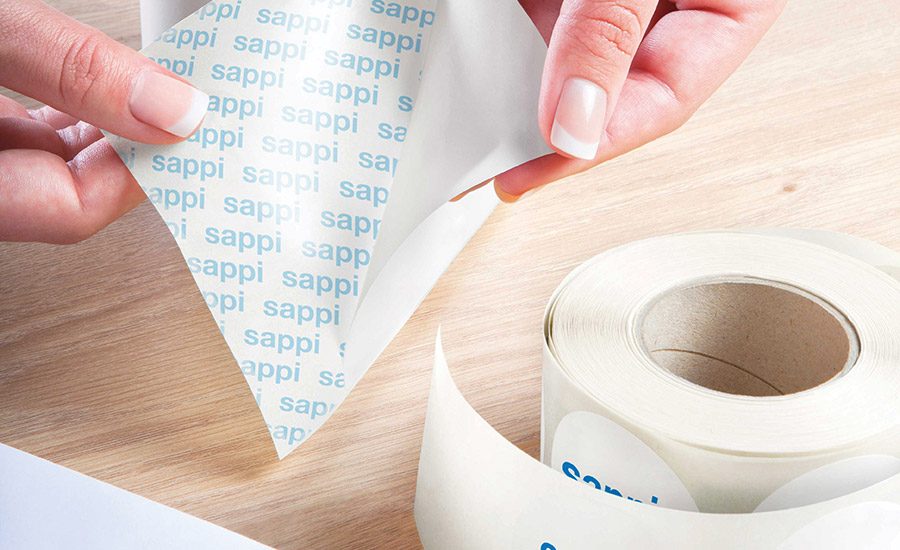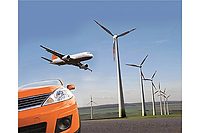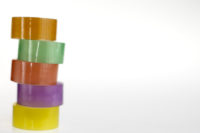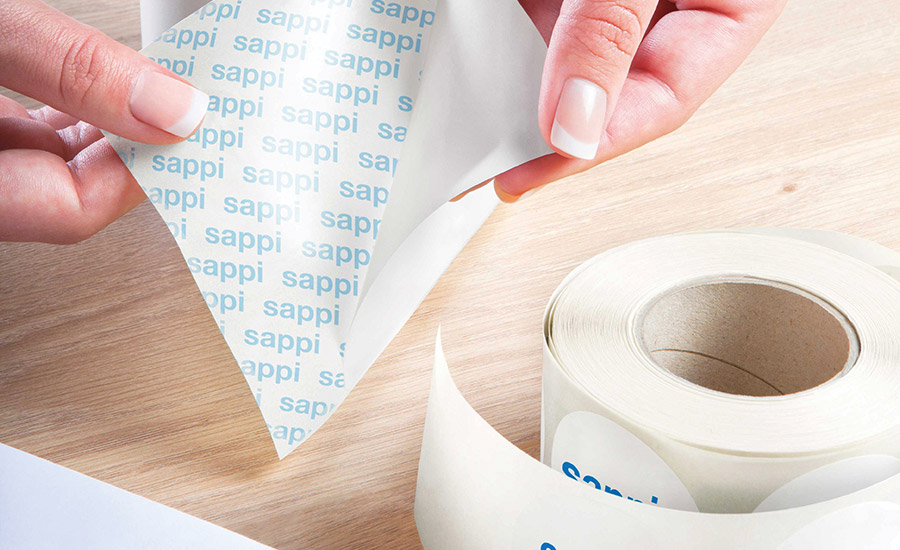Release Liners: Clay-Coated Kraft vs. Polyethylene-Coated Papers
Examining the pros and cons of clay-coated kraft papers (CCK) and polyethylene-coated papers (PCK).




The graphic arts market is dominated by two paper-based release liner options: clay-coated kraft papers (CCK) and polyethylene-coated papers (PCK). The AWA global market study “Pressure-Sensitive Graphic Films 2016” shows that CCK papers hold a share of 44%, and PCK papers have a share of 40%; both are mostly used worldwide as release liners. Additional release liner options for graphic art applications are glassine/SCK paper, with 12% market share; films, with 3%; and other papers, with 1%. Release liners must meet the graphic art market demands of good dimensional stability, high internal bond strength, high mechanical strength and rigidity excellent for manual handling.
The graphic art sector includes indoor advertising and branding, outdoor advertising and branding, vehicle graphics such as car wrapping, road traffic and safety markings, shelf markers, and architectural graphics. AWA reported for 2015 a global volume of 2.3 million sq m for pressure-sensitive graphic films. Key markets are North America and Europe, with a common market share of 54%.
CCK Grades Most Used in Europe
Market adoption is distinctly different in the U.S. and European markets. In Europe, CCK grades hold a 77% market share, according to the “AWA Global European Release Liner Study 2016” study, with PE coated taking 20%. This compares to just 40% for CCK in the U.S. market, cites the “AWA Global North America Release Liner Study 2014,” with PE-coated paper holding the best-seller position at 49%.
The North American market has traditionally relied on high-quality graphic films, such as polymeric calendared vinyl and cast vinyl. This is because CCK grades in the U.S. historically have had an open reverse side so there is no coating, which has a negative effect on the dimensional stability. This prompted operations to use PE-coated papers, even for less critical applications, as they have had an advantage in terms of dimensional stability. These liners can prevent problems with evenness and the formation of humidity bulges in composite laminates, especially in critical climate zones.
In the U.S., says Gunnar Sieber, manager product group release liner at Sappi, “It is worth noting that in the past, the image of CCK papers is not so good, because of no reverse side coating and the less good dimensional stability. Siliconizers who were looking for a safe solution would be more likely to specify PE-coated paper.”
Enhanced Performance of CCK Paper
Contrary to the U.S. market, in Europe CCK grades are mainly coated on the reverse side. Over past decades, companies like Sappi developed many enhancements to their CCK paper to improve the dimensional stability. As a result, CCK paper became a good release liner solution, even for advanced applications. In addition, CCK paper with functional reverse side coating* offers features like suitable smoothness for logo printing and retardation of moisture penetration. This even permits paper re-humidification with vapor or water film.
The latest enhancements deliver a range of performance benefits to support many market sectors. Combined with competitive price performance, the high-quality results allow end users to develop their services using this more advantageous release liner. Testing has shown that with appropriate humidity control in the lamination process for finished composite films/paper laminates, undesirable bumps do not form in the paper. Its blocking effect against migrating contaminants prevents printing errors on the cover film and also minimizes problems due to uncured silicone drips in the top film printing. Since the surface is coated on both sides, mechanical embossing effects (orange peel) on soft printing films are prevented, while low hygro expansion makes it an excellent alternative to PE coated.
“These advances expand the range of more critical applications for CCK papers,” Sieber says. Traditionally, PE-coated carrier papers are used in areas where they are not always necessary. But with these improvements, PE papers can be replaced with dimensionally stable CCK papers in less critical applications. FSC- and PEFC-certified CCK papers offer improved sustainability compared to PE papers, as they are an easily recyclable paper-based grade compared to a plastic-based grade. Pulp sourced from FSC-approved wood is used to produce the grades, and their reduced silicone consumption results in significant cost savings while having a positive effect on the eco-balance. Another important disadvantage of PE-coated papers is that these carrier materials are not suitable for applications with high heat exposure, such as laser printing.
“Compared to the European graphic art market, the U.S. market has more broadly adopted PE-coated grades as release liner,” Sieber says. “However, with all the improvements made in CCK grades over the years, they have much to offer as an alternative to PE-coated grades.”
Combining CCK and PE
CCK- and PE-coated grades can also be combined to create hybrid liners. CCK with a PE-coated extruded reverse side offers good lay flat performance under critical climate conditions. This joins the siliconizing properties of the CCK coating with a strong moisture barrier extrusion layer on the reverse side.
“The fact that the grades are made up from layers allows converters to combine them to achieve the best mix,” Sieber says. “Their excellent reverse stability allows converters to choose to use them on the open reverse side. In many applications, however, CCK paper alone is an efficient alternative to PE-coated paper.
“In Europe, CCK papers have been in ongoing development during the past few years. As a result, CCK with reverse side coating has become better and better, making it a tried and tested grade of choice with a market share of more than 75%. It is only in harsh environmental conditions, such as those with high humidity, where PE-coated paper remains the premier option. Even with more challenging environments, a hybrid solution of CCK paper with PE coating on the reverse is becoming an increasingly popular option.” ASI
For more information, visit www.algrosol.com/en.
Looking for a reprint of this article?
From high-res PDFs to custom plaques, order your copy today!







